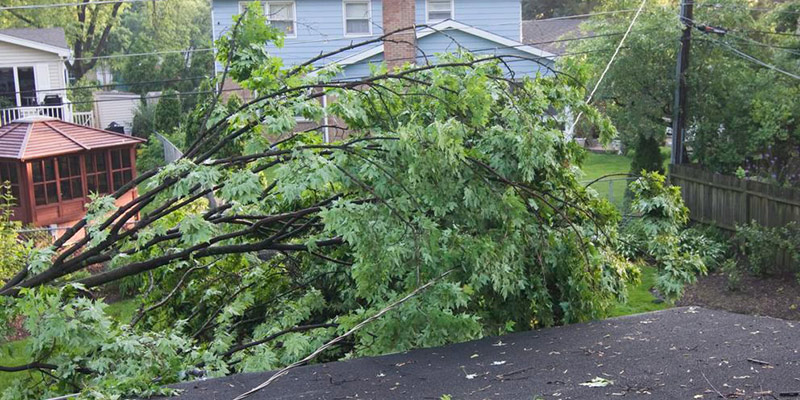
While tall trees offer shade and enhance natural beauty, they can also pose a significant risk if they fall.
If your neighbor’s tree falls on your house, the general rule is that the insurance policy for the damaged property covers the repairs. Therefore, if your neighbor’s tree lands on your house or any other insured structure on your property, your homeowner’s insurance should cover the loss. Similarly, if your tree falls on your neighbor’s house, their insurance policy should cover the damage.
A problem arises when a tree falls but doesn’t cause any damage, simply landing across your yard. In most cases, homeowners’ insurance policies do not cover the expense of debris removal if no insured structures are damaged or if there are no obstructed exit routes.
Your homeowner’s deductible could also become a concern, even in the case of a covered event. A deductible is the amount you are responsible for when it comes to property damage. Typically set anywhere from $1,000 or $2,500, deductibles serve as an incentive for homeowners to maintain their property and avoid filing claims. However, if it’s your neighbor’s tree that causes the damage and you’re left to cover the deductible, it can feel unfair, as you had little control over managing that risk.
What Can a Homeowner Do?
If a tree appears to be at risk of falling or dropping large, damaging branches, there are several steps you can take to protect your property:
The first step is to contact a licensed tree specialist to assess whether the tree is alive or dead. If it’s alive, the specialist can recommend proper ways to trim branches or remove the tree. If you’re concerned about a tree on your neighbor’s property, consider politely asking them to remove dead limbs or trees that pose a risk. If your neighbor doesn’t take action, you may need to follow up with a formal, certified letter, and you could consider copying your homeowner’s association or local government.
Many towns hold homeowners accountable for maintaining their landscaping and ensuring it doesn’t pose any safety hazards. Some cities have ordinances that mandate the removal of dangerous trees. It’s a good idea to check with your local government to understand the enforcement of these regulations.
Taking legal action is another option if your neighbor refuses to address a hazardous tree. An attorney can guide you through your options, particularly if the issue falls under “private nuisance” claims. This is defined as an interference with someone’s enjoyment and use of their property.
One option your lawyer may recommend is mediation. This involves a neutral third party who helps both parties resolve their dispute through negotiation and communication. Mediation is a helpful approach to try before considering legal action against your neighbor.
Steps To Follow After a Tree Falls
If your best prevention efforts fail and your neighbor’s tree ends up on your property, contact your insurance professional at Clyde Paul immediately. Depending on the extent of the damage to your home, you may need to seek temporary shelter elsewhere. Be sure to ask if your homeowner’s insurance covers those costs and how you can use the benefits available under your policy.
These steps can become more complicated if there are children, pets, or disabled occupants involved. If someone is injured, it adds another layer of urgency for emergency response. However, if you’ve planned for these situations in advance, it will be easier to respond quickly and effectively in the moments following an incident.
If your home sustains serious damage, you will need to take steps to prevent further losses, such as protecting against rain infiltration or pest infestations. Clyde Paul Agency can guide you on the necessary actions to take, based on the requirements outlined in your homeowner’s policy.
You can also expect an adjuster to inspect the damage. They will conduct a thorough assessment to determine what needs to be repaired or replaced, which could range from roofing materials to furniture and personal belongings, depending on the extent of the damage. If a crane is required to remove a tree from your home, it’s important to consult your insurance professional before hiring the service. Prices can vary significantly, and some homeowner’s policies may limit the coverage for those costs.
Take dangerous trees seriously, as they can be both deadly and costly to handle once they’ve fallen. If you have valuable exterior structures, such as a guest house or swimming pool, be sure to check with your insurance agent during your next policy review to ensure they are also covered for damage caused by a neighbor’s tree.
This content is for informational purposes only and not for the purpose of providing professional, financial, medical or legal advice. You should contact your licensed professional to obtain advice with respect to any particular issue or problem.
